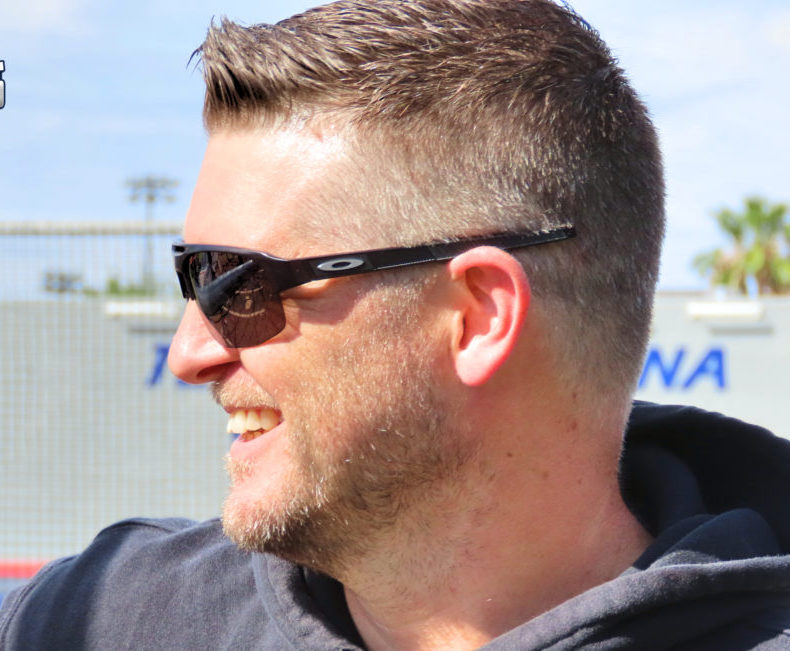
What Does It Mean to Have "Good" Swing Mechanics?
At Pelotero, our mission is to help every player reach their potential through personalized development. Scaling personalized insights with technology requires us to answer the foundational question: "What does it mean to have good swing mechanics?" Great swing mechanics are the cornerstone of adaptability and success at the plate, and understanding them is the first step toward maximizing potential. Without properly defining them, we can't provide meaningful guidance. We end up guessing. We end up debating with one another. Experiential biases carry too much weight. And the process from where a hitter is now to the best version of themselves is hindered with trial and error and doubt. It takes too much time.
Every hitter has the same body parts and every swing creates a certain set of conditions. And while everybody moves differently and creates those conditions in different ways, there are certain conditions that the game has told us over time give hitters a better chance to succeed. This article is going to explain what those conditions are and how Pelotero's player intelligence platform grades them,
The Role of Swing Mechanics and Why We Need to Define "Good"
Mechanics are just mechanics, but they influence your timing. They influence your swing decisions. They influence everything that you're doing as a hitter.
I love to describe good mechanics as additive, meaning they enhance a hitter’s ability to adjust to different pitches and situations. A well-constructed swing allows for dynamic timing and versatility, enabling hitters to:
Hit to all fields (opposite field, pull side, up and down the zone).
Compete against high-quality pitches (different pitch types in all parts of the zone).
Have more time to make swing decisions.
In contrast, bad mechanics are subtractive. They limit a hitter’s effectiveness, creating challenges like difficulty hitting certain pitches (e.g., high fastballs or breaking balls away) and narrowing the player’s options at the plate. This makes it critical to establish objective criteria for evaluating swings and understanding their impact on timing, decision-making, and overall performance.
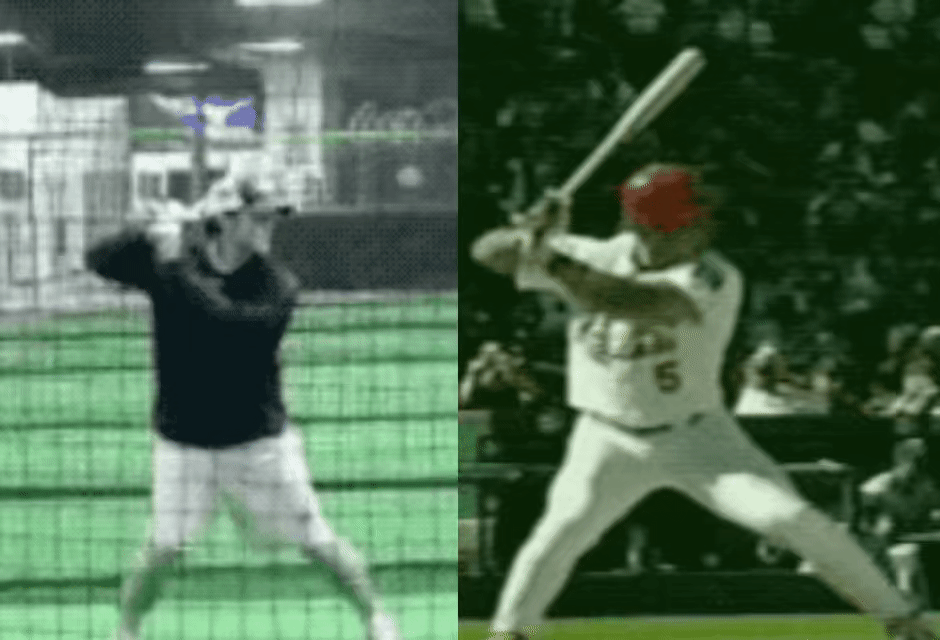
My swing in 2009 vs. Albert Pujols - Subtractive vs. Additive mechanics
Something else that needs to be considered in the mechanical analysis is when the moves are being made. Where different body parts are at different points in the swing tell us what mechanism the hitter is using to get there. For example, if a hitter has a push pattern they will have to swing really early, and their hands aren't going to stay back. The mechanism the hitter is using to create leverage with the bat will dictate their swing pattern.
Identifying "what" mechanics are additive for hitters and "when" they need to happen allows us to define good swing mechanics. And if we do this, we can very quickly identify swing flaws for every hitter using video analysis. And this is what we have done with Pelotero's player intelligence platform. Using a representative video of a hitter's swing we can score their mechanics against the attributes present in the greatest swings of all time, provide a path to improvement, and provide insights that will help define approach and identity at the plate.
Defining "Good" Swing Mechanics
There are three characteristics that every swing is going to have - and by thinking about these we can build an additive swing in three dimensions.
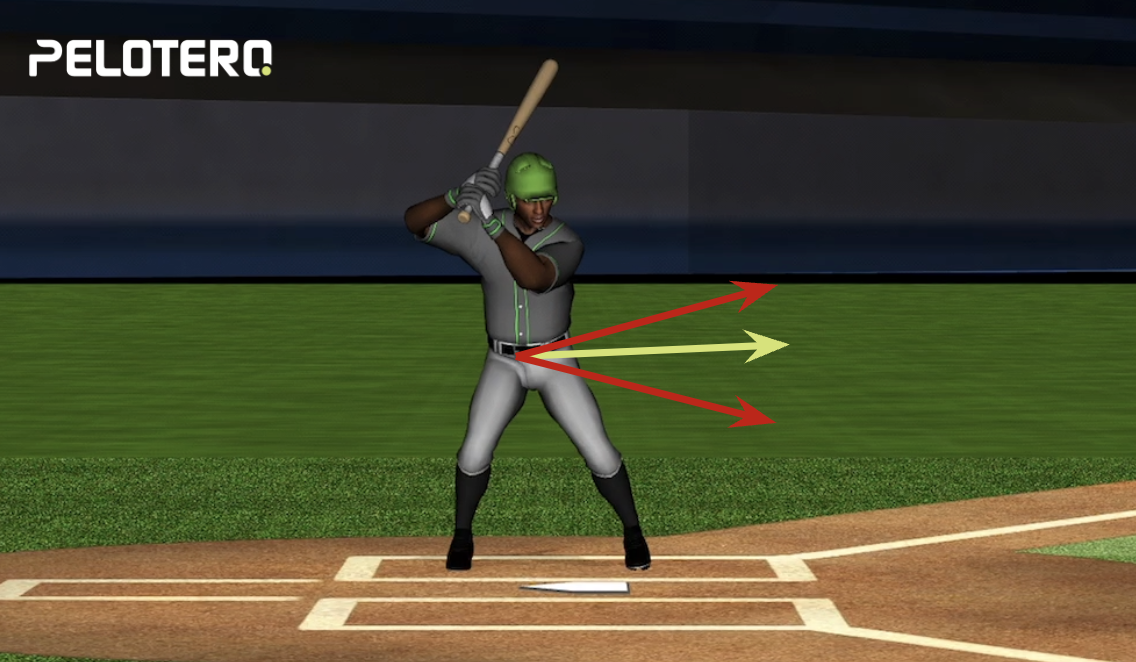
Plane: The trajectory of the bat through the zone. Ideally, hitters create a slightly upward path for optimal contact, maximizing line drives rather than ground balls or pop-ups. The history of the game has told us that hard line drives are the best outcome. When you try to hit fly balls, your margin of error changes. Your miss under is now a pop up, and very likely an out.
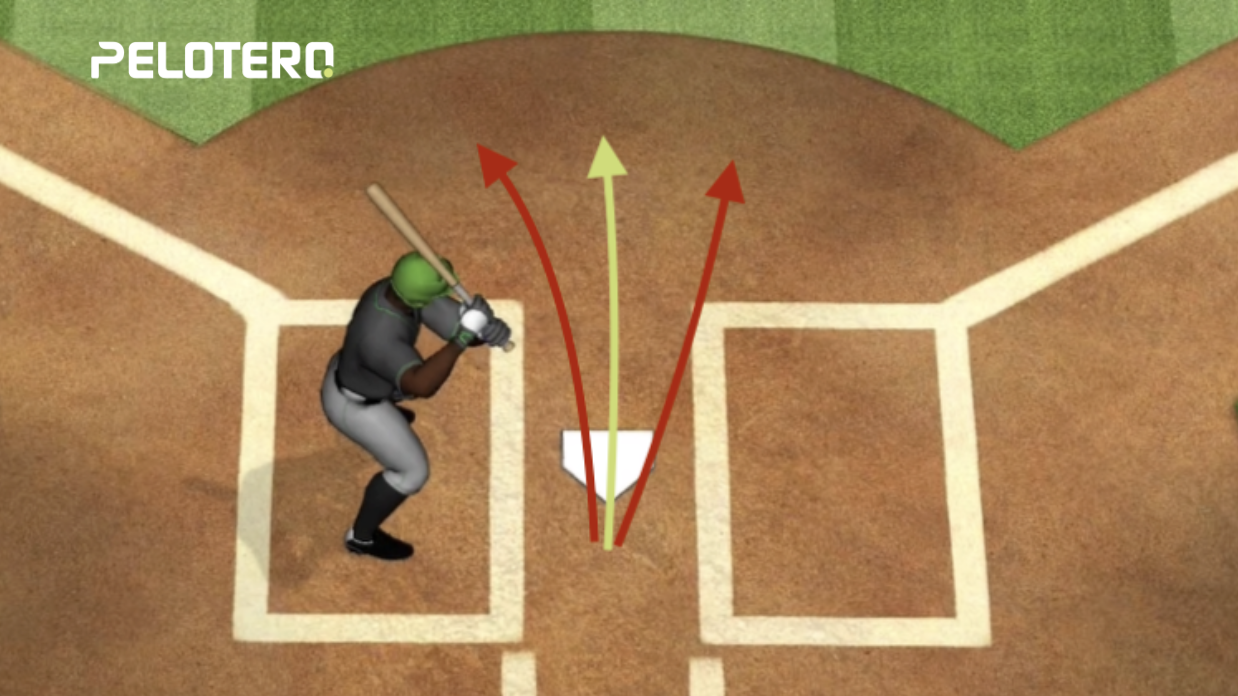
Swing Path/Direction: A bat path that moves through the middle of the field is ideal for creating force and consistency.
This is my favorite thing to look for when I flip or throw to a hitter because when you're throwing and you're directly in front of the hitter, you can see if the bat's slashing down and across or if they're dragging the bat through the zone and it never squares up. When you throw to a hitter whose direction is coming directly at you, it looks different. It sounds different.

Depth and Length: A swing with depth (staying on plane early) and length (staying in the zone longer) increases the margin for error, allowing for better contact on a broader range of pitches.
To illustrate this concept I'd like to compare an old swing of mine to one of the best ever. My old swing had length but no depth because my hands are coming forward immediately. My bat couldn't create any sort of speed on plane deep because it was being pushed forward. With Albert though, we can see his barrel working on plane, his elbow is getting under, and he's creating depth. The structure of his arms (lead arm up, rear elbow down) allows him to maintain length through the zone. By creating depth and length, his margin for error in the hitting zone is massive.
This is what good is. You're on plane, you have good direction, you have good depth and length, and you're doing it in a timing window that's incredibly quick and adjustable.
The Best Swings of All Time
These swings from Albert Pujols, Barry Bonds, and Ted Williams have the highest swing mechanics scores in our system. They all have great direction, depth and length, and get on plane early.They also happen to be three of the greatest hitters of all time.
Analyzing them side-by-side shows that they create a lot of the same swing conditions by moving in very different ways. Each player’s body type, athleticism, and motor preferences dictate their unique mechanics, yet they all adhere to key principles - the same key principles that the Pelotero platform assesses for.
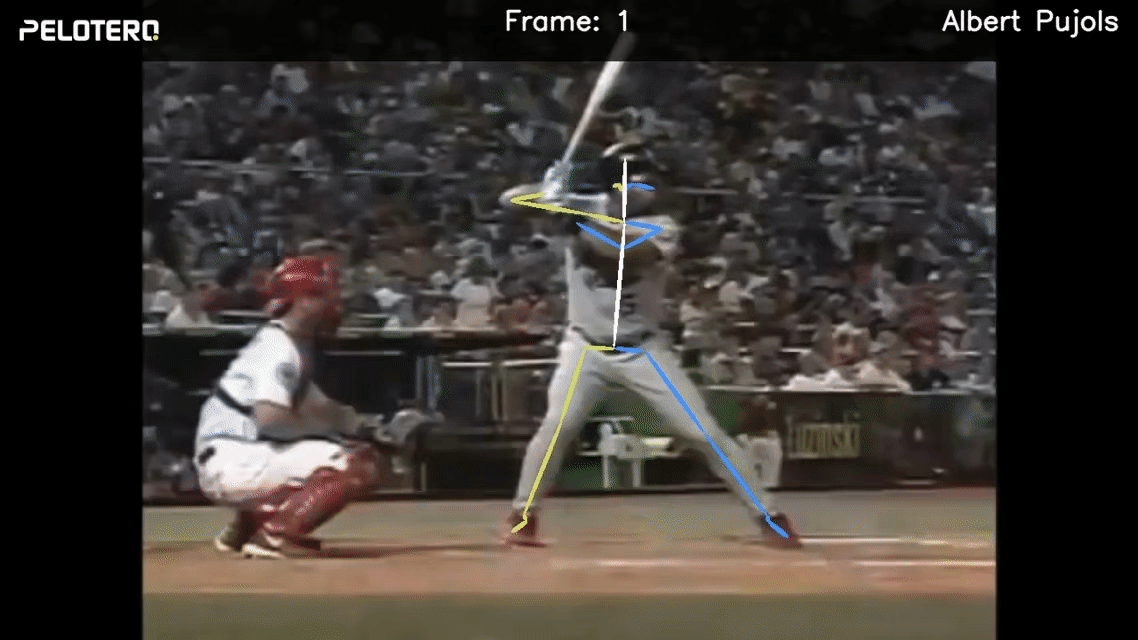

✅ Lead Arm and Back Elbow Movement: The lead arm works upward, while the back elbow moves downward, creating optimal shoulder tilt.
✅ Hand Positioning: Hands stay back as shoulders tilt, preserving depth.
✅ Pelvis Action: Proper rotation and positioning of the pelvis - front hip works back as the back knee goes down and the front leg opens up.
These are core moves that are going to pop in the greats over and over again.
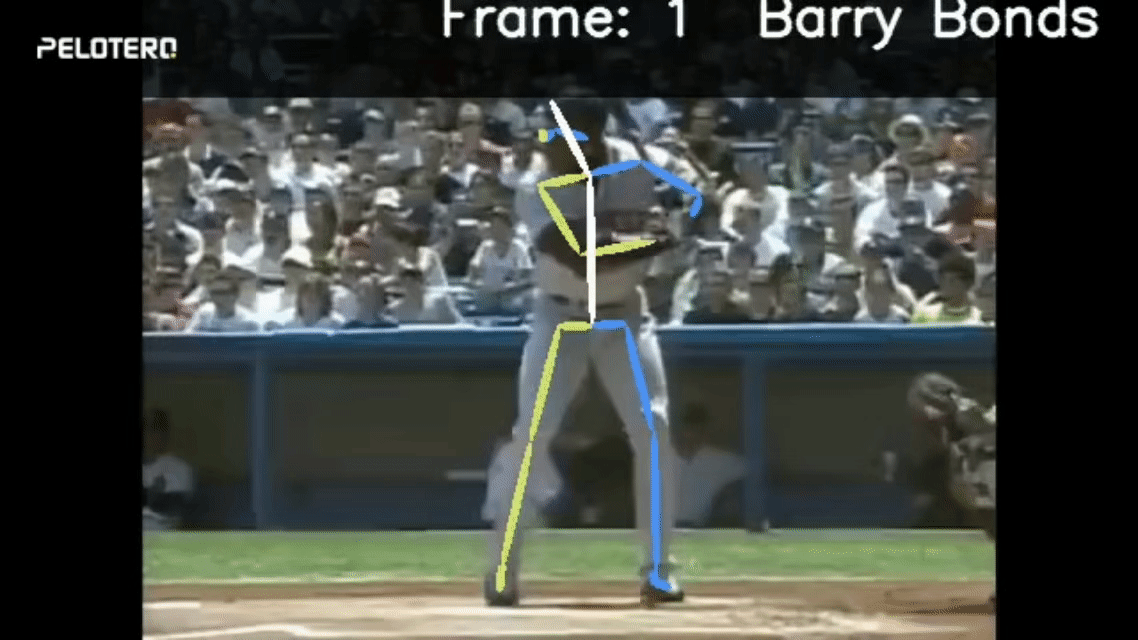

✅ Lead arm works upward, while the back elbow moves downward
✅ Hands stay back as shoulders tilt
✅ Front hip works back as the back knee goes down and the front leg opens up.
Bonds loses some points on this swing for being more leaned back (he's going upper deck here in Yankee Stadium). His body is clearly moving differently thank Albert - he's more upright, more front leg extension, hands starting from lower - but the core moves are still there.
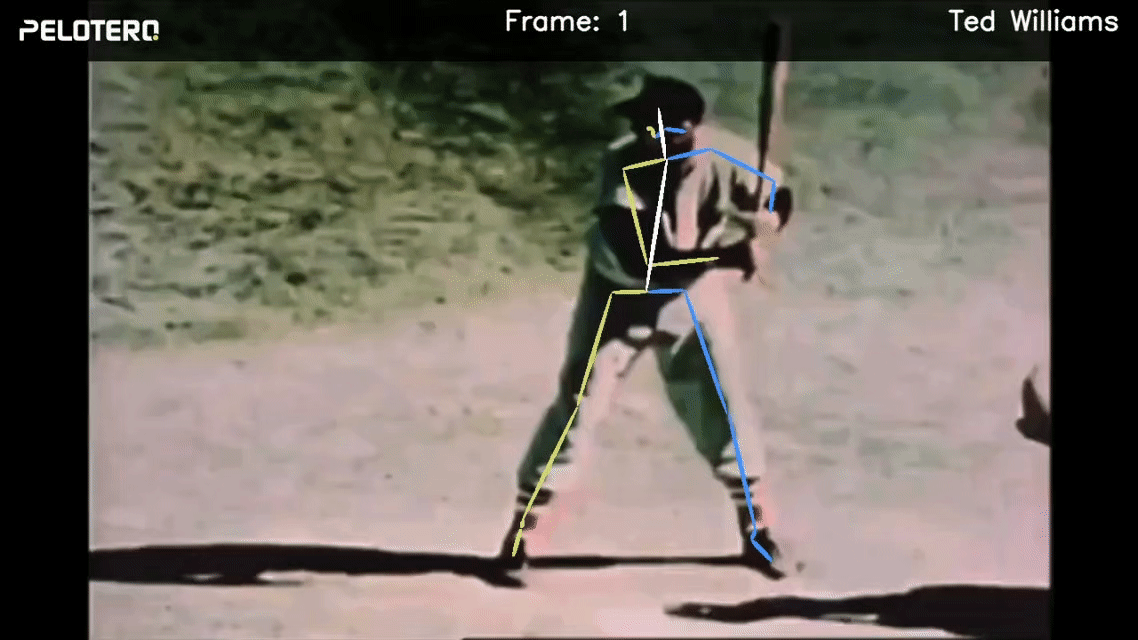

✅ Lead arm works upward, while the back elbow moves downward
✅ Hands stay back as shoulders tilt
✅ Front hip works back as the back knee goes down and the front leg opens up.
Ted does it from a different style once again. He has a larger barrel tip out front, a more pronounced gather, and some interesting lower body presets. But we are seeing the same conditions over and over again with the greatest of all time.
Everyone is going to have different ways of moving and different stylistic quirks (motor preferences can expedite that process) but there are certain conditions all of the greatest hitters meet and objectively create advantages in competition.
Identifying Swing Flaws
When we look at other great hitters that grade out slightly lower on our platform something interesting happens. "Flaws" in their swing that create weakness actually influence their on-field approach and identities as hitters. When hitters have understanding of their mechanical strengths and weaknesses, they know how to intentionally put themselves in advantageous positions. Here are 3 hitters that didn't grade out as well as the best ever and some thoughts on how their swing flaws influence their approach.
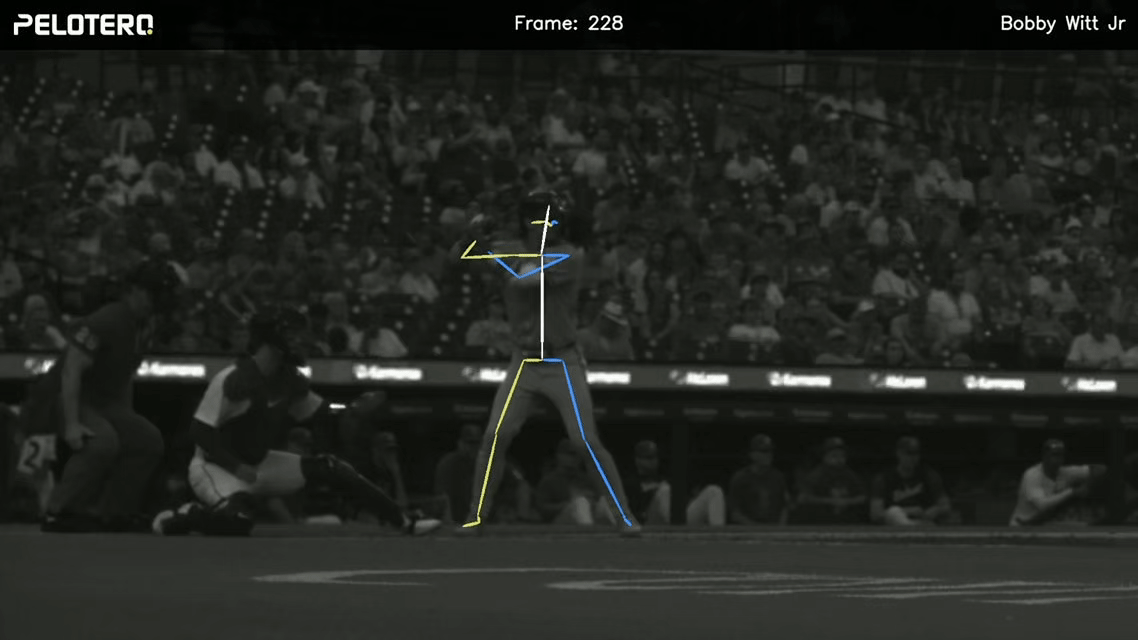

Bobby Witt Jr.
Bobby Witt Jr. is a fantastic hitter and an excellent athlete (near the top of the league in sprint speed and bat speed etc.) The main thing he loses points for are the hands coming forward during the swing. His shoulders tend to stay flatter than guys like Pujols, Bonds, and Williams forcing the hands further forward in the swing. The result is a swing direction that is slightly to the left of center.
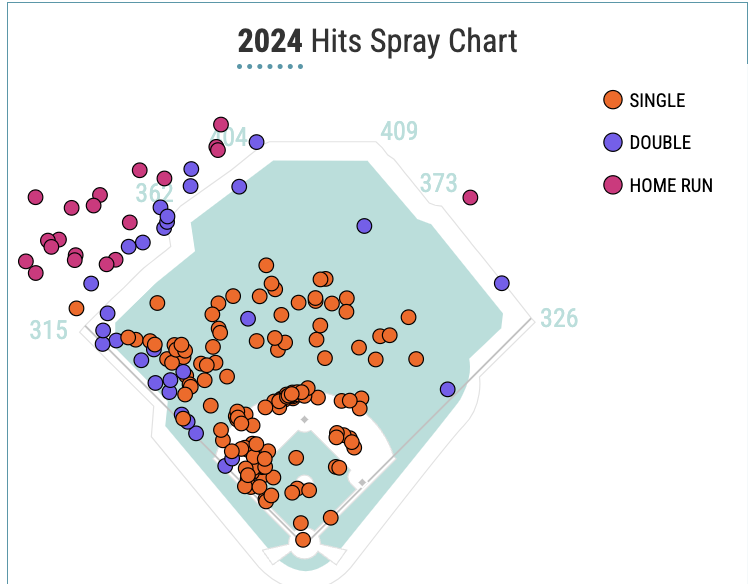
Understanding this swing tendency and his athleticism certainly informs his approach. He performs like one of the best hitters in the game despite having a swing that isn't as ideal as some of the all-time greats.
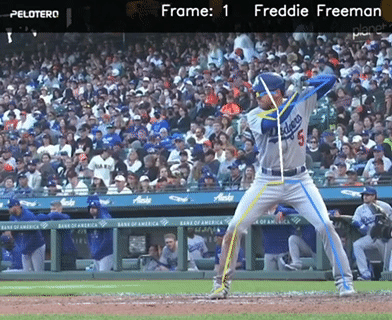

Freddie Freeman
Freeman's mechanics lean into his physicality. He has less of a back hip pull than guys like Pujols or Bonds but is able to compensate by leaning back. Compensations like this may lose him points on his swing score (lean back leads to a steeper plane/less margin for error), but these are not bad things! They demonstrate awareness for where his body needs to be and adaptability. He also starts with a forward lean in his stance to counteract this. Adaptability and awareness like this is part of why he is such a nightmare for pitchers.
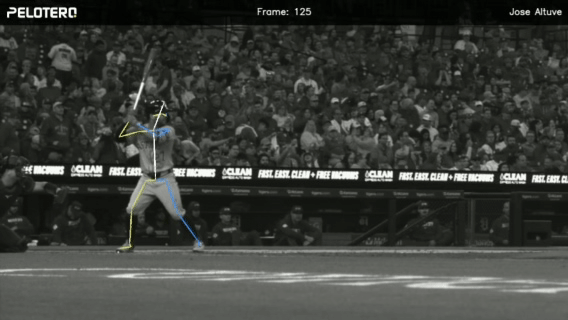

Jose Altuve
Altuve does things pretty differently than Bonds and Pujols. He starts with much higher hands, the shoulder stay much flatter, and his kind of drop into a slot rather than working back. But what this does for him, is allow him to hammer balls to the pull-side. For a much smaller guy, this gives him a much better shot at doing damage and allows him to hit more home runs. He is sacrificing some depth and opening up other holes in the zone in order to hit for more power.
His swing reflects an approach designed to maximize his explosiveness and precision, showing how tailored mechanics can overcome physical limitations.
Analysis of these three hitters demonstrates that awareness of swing characteristics can create strategic advantages when crafting an approach. It allows players and coaches to make choices that will maximize a player's chance of success.
Conclusion - The Ultimate Goal of Pelotero
The principles of great hitting mechanics—additive versus subtractive elements, timing, and swing plane—are timeless. By understanding these fundamentals, hitters can evaluate their strengths, address weaknesses, and create a swing tailored to their unique abilities.
At Pelotero, we emphasize objectivity. Rather than engaging in debates over hitting philosophies, we focus on the conditions great hitters consistently create: optimal plane, direction, depth, and length. The game itself has revealed what works, and by studying history’s best hitters, we can leverage data, technology, and software replicate those successes.
Like this article? Here are some more resources to explore:
Learn more about our player intelligence platform here: https://pelotero.com/how-it-works
If you want to get your swing scored, you can do so by visiting one of our partners! - https://pelotero.com/pelotero-partners
Check out this video for deeper analysis!

